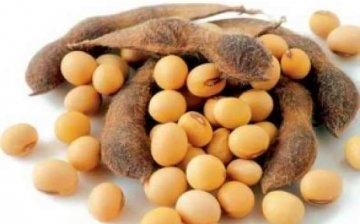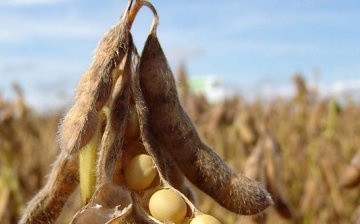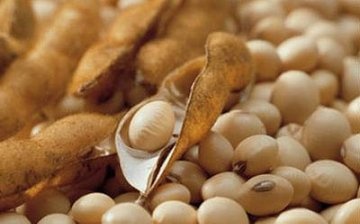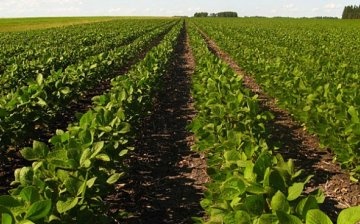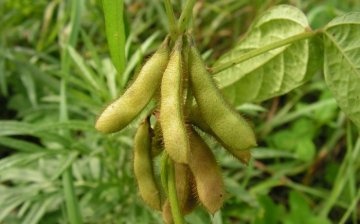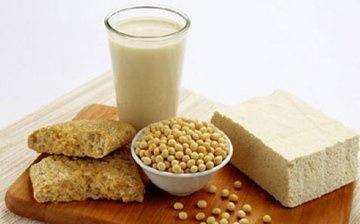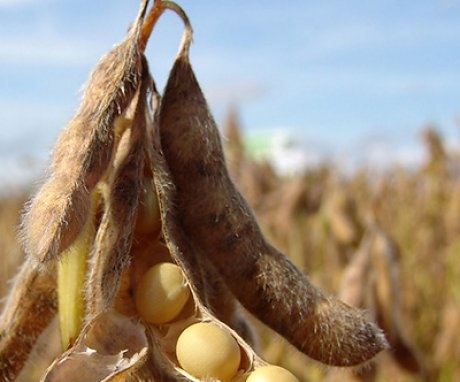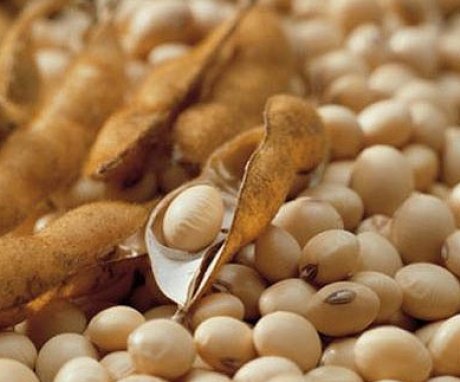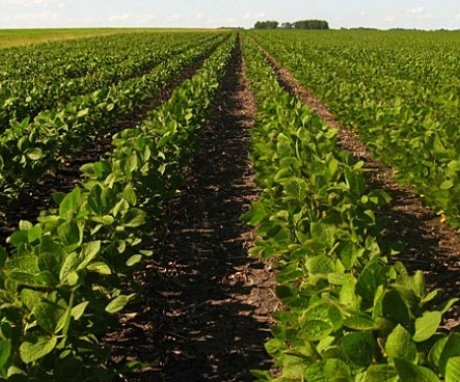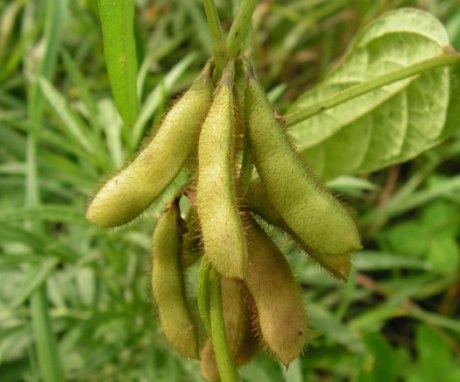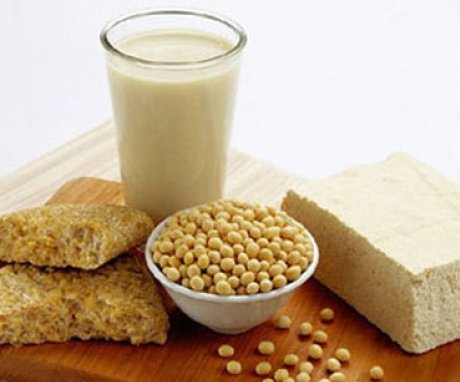Soybean growing technology: description, reproduction, care and application
Soy is a herbaceous shrub that belongs to the legume family. It comes from East Asia, but it is grown on almost all continents.
Content:
- Soybean characteristic
- Soybean varieties
- Soybean growing technologies
- Care and reproduction
- Soy application
Soybean characteristic
Soy is considered one of the most promising crops. It is a good source of vegetable protein. If you disassemble the chemical composition, you get a unique product. It contains 20% carbohydrates, 25% fat and more than 45% protein, which is easily absorbed by the human body.
Over the past few decades, soybean production has grown by almost 9 times. It is grown in 80 countries around the world. Soybeans are the most profitable plant for planting in the fields, its productivity is several times higher than sunflower income.
Soy is a bush, depending on the variety, its height can be from 30 cm to 140 cm.
The main root of a small size has the shape of a rod and, going deeper, tapers. The entire root system is 15–20 cm deep. Stems are erect, sometimes curly, strong. Often the stems, leaves, and beans are pubescent. Green leaves are located on petioles.
Their shape and color vary depending on the variety and place of growth. The flowers are small, painted in pink, white or purple tones. Beans in almost all varieties are straight, sometimes curved. Oval-shaped seeds also come in a variety of sizes and shapes. They are painted yellow, brown, brown.
Soybean varieties
The most common soybean varieties:
- Diamond. A small bush, the height of which is from 50 cm to 70 cm. The stems are pubescent and highly branched. Leaves are medium in size, oval, pimpled, tinted green. Purple flowers bloom in early summer. The variety belongs to the early, the fruits ripen by the end of summer. These are seeds that are colored yellow with a brown scar. Their shape is oval-oblong. This variety is resistant to disease and drought. Recommended for planting in forest-steppe areas.
- Annushka. The Annushka variety belongs to the early ripening early varieties. Plant height reaches 110 cm, bean ovary begins at 12-15 cm from the soil surface. The stems are pubescent with gray hairs and strongly branched. Leaves are green, lacent, densely located on the branches. Flowers are painted in purple. The seeds, located in the crescent beans, are oval-rounded, colored yellow, and the scar is also yellow. The variety is characterized by high fertility. Ripening occurs at the beginning of August. The plant is resistant to disease.
- Legend. The bush is compact, knocked down, of medium size. Stems are thin, not curly, pubescent. The leaves are green, pimpled, oval and pointed at the ends. Flowers are painted white. Seeds are round-convex, colored yellow with a pronounced scar of dark brown color. The variety is resistant to shedding, diseases and tolerates the dry period well. Recommended for planting in steppe and forest-steppe zones.
- Vorskla. It is a hybrid variety, the height of which reaches 85 cm. Stems are straight with gray pubescence. Flowers are located on a peduncle and are collected in a brush, the color of the petals is purple.The beans are also pubescent, have a tough fibrous shell. Each of them contains 2-3 seeds. Seeds are oval, colored yellow with a yellow scar. The variety is early maturing. Resistant to common diseases. Also the advantage of this plant is that it tolerates well the low temperatures that occur during flowering. Recommended for growing in forest-steppe regions.
- Swan. The variety is early maturing. After sowing, the fruits ripen in 100-105 days. The height of the bush is 95 cm, the stems are pubescent, branching well. The lower ovaries are formed at a height of 10 cm from the surface of the earth. Blossoms with purple flowers. The seeds are colored yellow, the scar is the same color.
- Olshanka. This is a hybrid variety. The plant is tall, the stems extend up to 95 cm. Moreover, the lower ovary is at a height of 15 cm. The stems are dark brown with reddish pubescence. It blooms in the early months, the petals are purple. The beans are straight and also have reddish pubescence. Seeds are medium in size, oval, colored yellow with a brown scar. Due to the fact that the variety is early ripening, it can be planted as a predecessor to winter crops. Resistant to diseases and low temperatures. Recommended for planting in the forest-steppe zone.
- Anastasia. The bush is knocked down and high, up to 130 cm. The ovaries begin to form at least 15 cm from the ground. Blooms with purple petals. The leaves are oblong, lacent, colored in green. This variety differs in that many beans contain up to 4 seeds per bush. Basically, in other varieties, this is 2-3 seeds. High productivity and early ripening are also the advantages of this plant. Disease resistant, drought tolerant.
- Antoshka. The height of the bush of this soybean variety is 130 cm. The stems are strong, branching, have white pubescence, just like the beans. The lower ovary forms at a height of 20–25 cm. It blooms in white in early summer. The leaves are lacent, large, densely located on the branches. The seeds and the scar on them are colored light yellow. The variety is highly productive, drought-resistant.
Soybean growing technology
The technology of growing soybeans is developing along with its distribution throughout the world. Each region has its own characteristics and nuances that must be taken into account when mass breeding this product.
Main features when growing:
- When preparing the soil for sowing soybeans, it is worth carefully working out and removing the weeds.
- The soil should be loose and fertile.
- Fertilizers are applied depending on on which plant was the predecessor in a given area.
- It is better to choose the middle of spring as the period for sowing in the fields, late April - early May.
Moisture is essential in the cultivation of this crop. Therefore, soybean growing technology is being developed mainly for areas where there is a possibility of irrigation. There have been attempts to plant soybeans on land without artificial irrigation, but this experience has not been successful. However, in areas where rainfall exceeds 450 mm per year, farmers successfully grow this plant in non-irrigated fields.
With timely sowing of seeds, moisture after winter will nourish the seedlings. But when by the end of spring the third and subsequent leaves appear on the plant, and the ambient temperature approaches +30 degrees, additional watering is needed.
On hot sunny days, when the air warms up to +45 degrees, the plant stops developing until the night, cooler period. When forming buds, watering is necessary abundant, since drying out reduces the likelihood of a high yield.
Recently, farmers are increasingly turning to drip irrigation. This method significantly reduces the waste of water, and moisture goes directly to the bush, constantly feeding it. At a costly stage of organizing such a system, it subsequently saves time and money, and also maintains a high yield of soybeans.
When sowing soybean seeds on a large scale, it is necessary to take into account the fact that it does not like shading. Therefore, the distance between the bushes should be more than other legumes... The full amount of sunlight should be on the leaves, flowers and beans. With its lack, the formation of beans is impaired.
Care and reproduction
The technologies for cultivating soybeans in the fields are somewhat different from care and cultivation in summer cottages and areas near the house. It is rarely found in garden plots, since it is not popular among summer residents. But with proper care, you can get a great harvest.
Care rules:
- The most important condition for growing is a bright planting site and regular watering.
- Soybeans can be planted in almost any soil.
- Space needed well to remove weeds and loosen... It will be useful to do this process 2-3 times before sowing.
- When planting, it is necessary to form shallow holes and put seeds in them, then cover them with earth and trample them.
- Water it regularly with warm water.
- The weeding process is carried out when weeds appear. After watering, to retain moisture, the ground around the bushes can be mulched.
- Fertilization can be started early in the development of the plant. For this, organic and mineral fertilizers are suitable. Before planting, you can apply nitrogenous fertilizers to the ground.
- You can harvest when the leaves have already flown off the bush. And the beans turned yellow or tan.
- After harvesting, the seeds must be dried, as otherwise, they can rot.
Soybean propagation occurs only with the help of seeds. Before boarding they can be soaked in warm water. But this is not an obligatory procedure, since the germination rate of soybeans is 80–90%. Sowing is carried out in a period when there are no longer strong night frosts.
Soy application
Soy is mainly used as food product... It contains a large amount of protein and many different nutrients and minerals. Magnesium, phosphorus, sodium, calcium, iron - all this has a beneficial effect on the human body when eating soy products.
Everyone is familiar with such a dish as sushi. But how to make sushi without soy sauce. It was from the eastern countries that soybean culture came to the territory of Europe and Russia, and many products made from beans were borrowed from the same places. The composition of soy sauce is as healthy as the product it is made from. The high content of amino acids, vitamins, trace elements and antioxidants helps to maintain the health and youth of the body.
Soy sauce is recommended for people with heart disease and those who have had a heart attack. But do not abuse it, especially if you have kidney or stomach problems.
Soy beans are used to prepare soy meat and cheese, which are mainly used by vegetarians. These foods are free of cholesterol and hormones and are easily absorbed by the body. Another benefit of soy meat and cheese is that they do not lead to obesity.
Soy milk is also made from soy, which is an intermediate point in the manufacture of cheese. Milk does not contain lactose, is easily absorbed by the body and does not cause allergies.
But, as with all products, everything should be in moderation. With the constant excessive consumption of soy and soy products, a number of diseases can occur. This is especially true for children. They may have stunted growth and thyroid problems. An adult can also have problems. Therefore, when using it, you must observe the measure.
Soy is also used in cosmetology and cosmetic production.
As part of shampoos and hair masks, it acts as a good moisturizer. Creams and tonics containing soy proteins are designed to care for delicate and sensitive skin. It perfectly moisturizes and nourishes cells.
Fodder soybeans are used in poultry and livestock farming. It is not brought in raw as feed, and pre-prepared. The proteins contained in it have a beneficial effect on animals, especially on their weight - it increases.
The use of soy is wide: cooking, farming, cosmetology are just a few points. With the development of technology and the spread of this plant around the planet, the possibilities for its use increase.
More information about soybeans can be found in the video.



